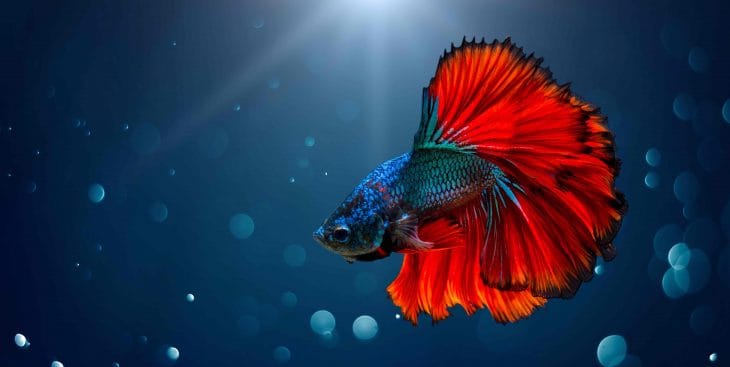
Betta Fish is highly territorial and often prefers to go by its own way alone. As colorful as it can be, it’s not suitable for tanks with other betta fishes because it will only lead to fighting. You can see them being displayed in small containers or fishbowls, but do they actually feel bored in a small space? The answer is yes.
Like humans, they would prefer a habitat where they can explore (so make sure to put some kind of “entertainment system” for them as a pet), nevertheless, this type of fish can thrive on bodies of water with low oxygen levels such as small, murky ponds, or semi-polluted water. Are you now more interested about the betta fish? If so, our team has prepared a series of interesting betta fish facts that you will definitely enjoy and learn a lot from.
- You can mostly find betta fish in freshwater.
- Scientifically, they are known as Betta splendens.
- Its roots originate from Southeast Asia.
- Cambodia, Myanmar, Thailand, and Vietnam are few of the Southeast Asian countries where you can find them.
- They are also called the siamese fighting fish.
- Betta fish are famous worldwide as pets.
- It is one of the most obtainable aquarium fish on the the planet.
- Commonly red, they also have diverse colors ranging from black, blue, orange, and white.
- You will scarcely see them in the colors: copper, green, metallic, turquoise, and even pink.
- Betta fish are popular with newbie pet owners and even with children because they are relatively low maintenance.
- Betta fish have been domesticated for more than 1,000 years now.
- This fish is native to Thailand’s central plain.
- Thailand’s King Rama III was the reason why they became famous internationally.
- Betta fish made its first appearance in the West near the end of the 1800s.
- Placing two male betta fish in the same tank will result in fighting each other to death.
- Betta fish were originally made to be hostile in order to fight in matches which resembled a cockfight.
- Other betta fish can sport two or more colors on their bodies with their tails having a look that is unique to them.
- Betta fish can draw breath right from the outer part of the water.
- Albino betta is the most uncommon betta fish color to ever exist.
- Betta fish can survive shallow oxygen levels and appalling water conditions.
Was this page helpful?
Our commitment to delivering trustworthy and engaging content is at the heart of what we do. Each fact on our site is contributed by real users like you, bringing a wealth of diverse insights and information. To ensure the highest standards of accuracy and reliability, our dedicated editors meticulously review each submission. This process guarantees that the facts we share are not only fascinating but also credible. Trust in our commitment to quality and authenticity as you explore and learn with us.
